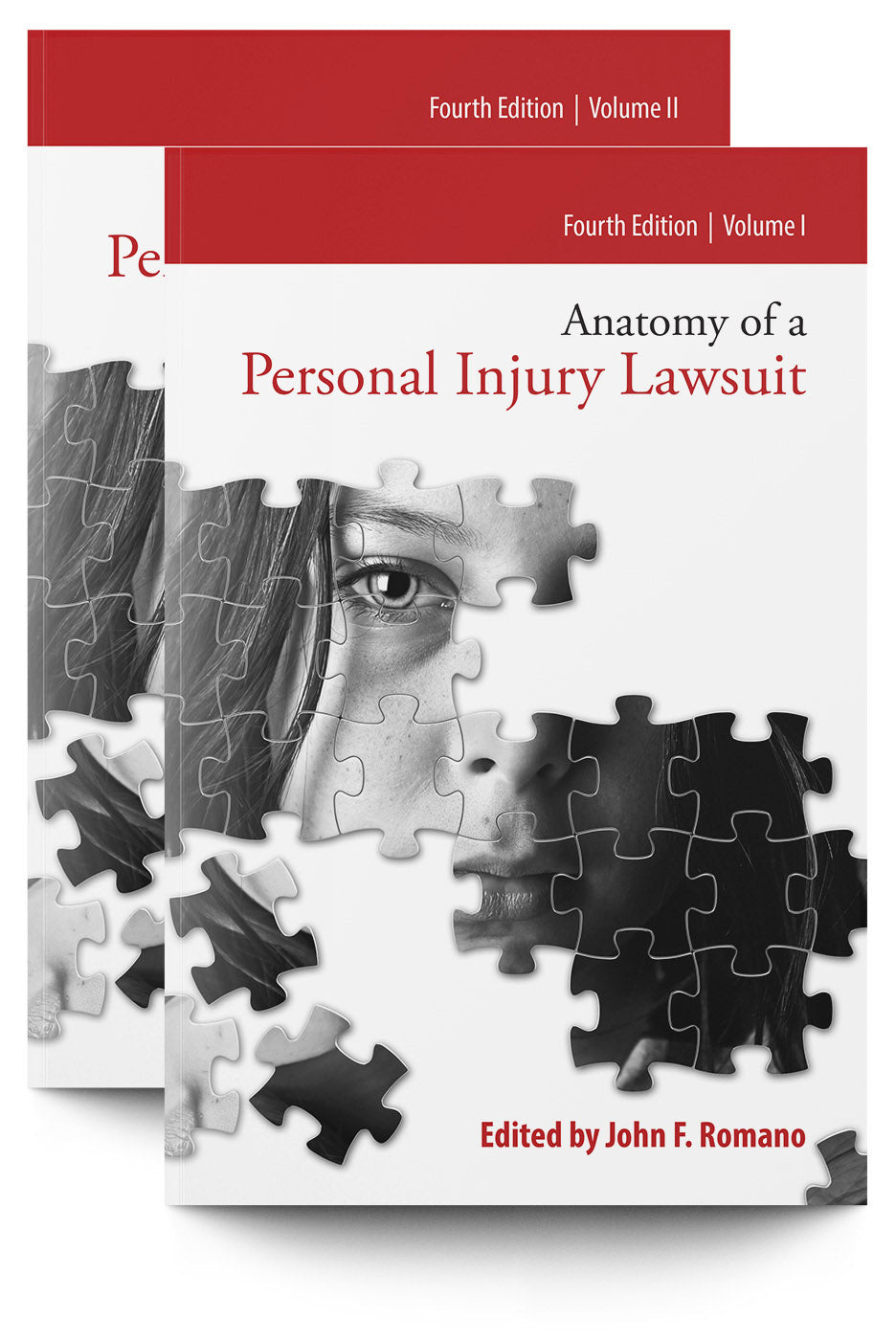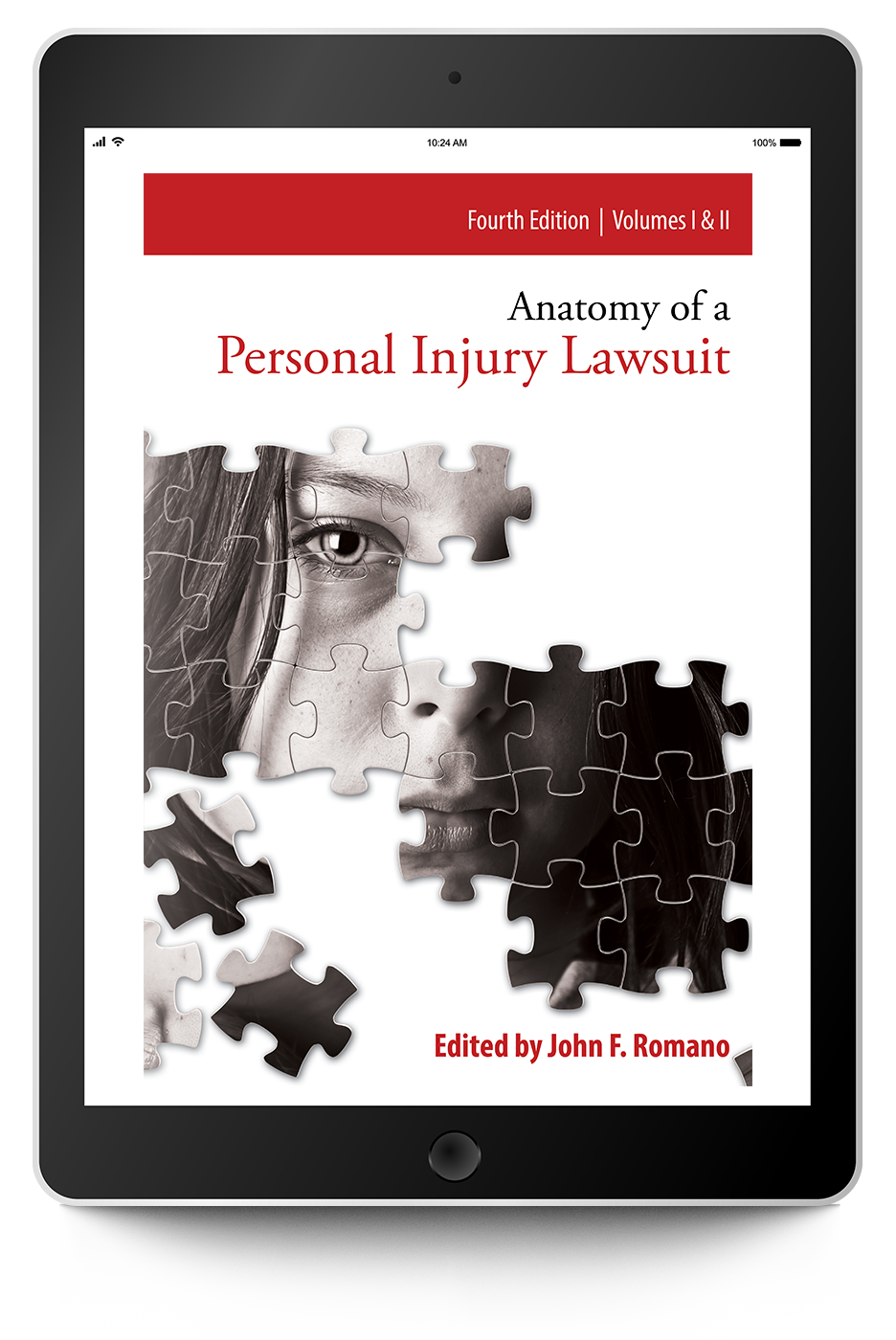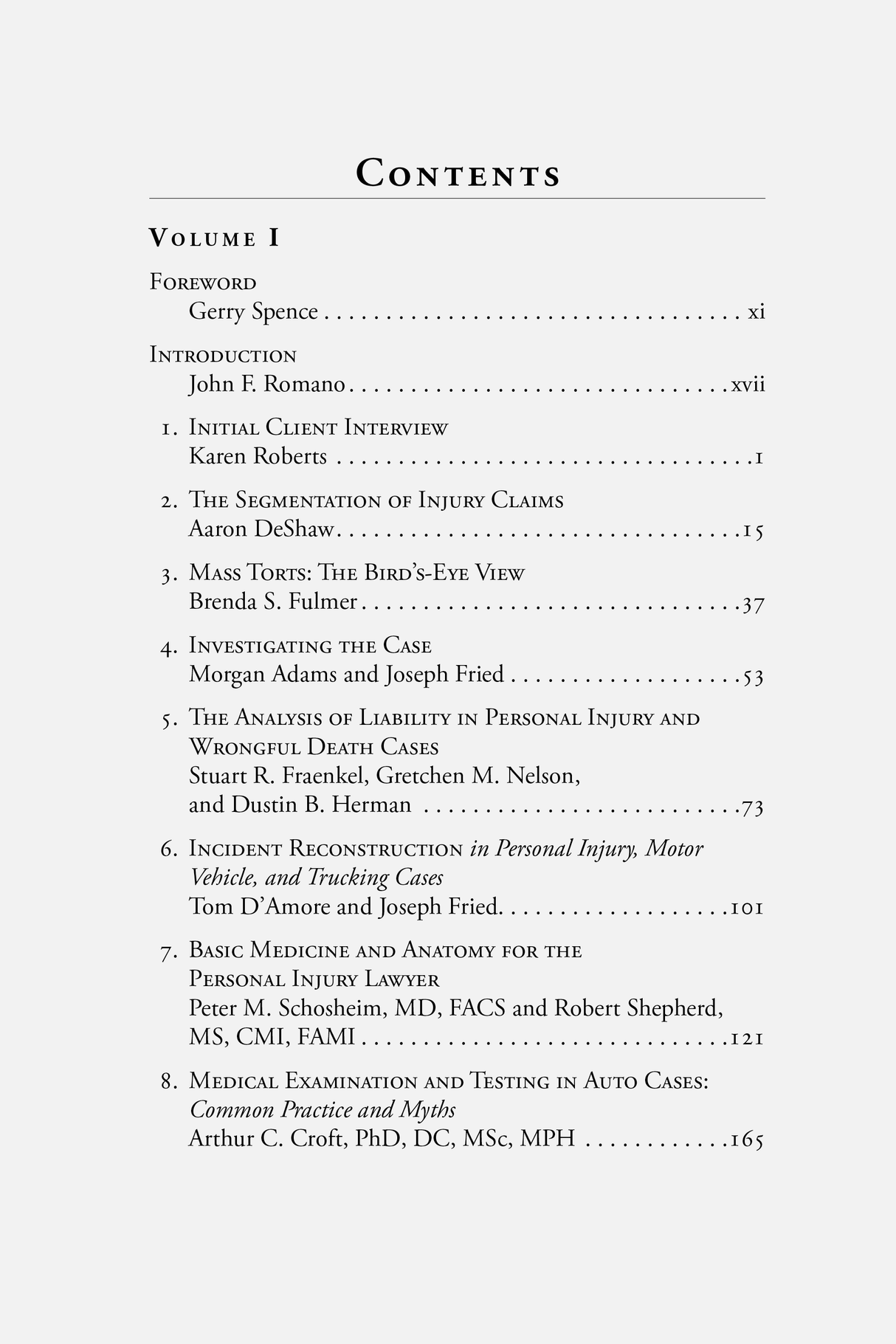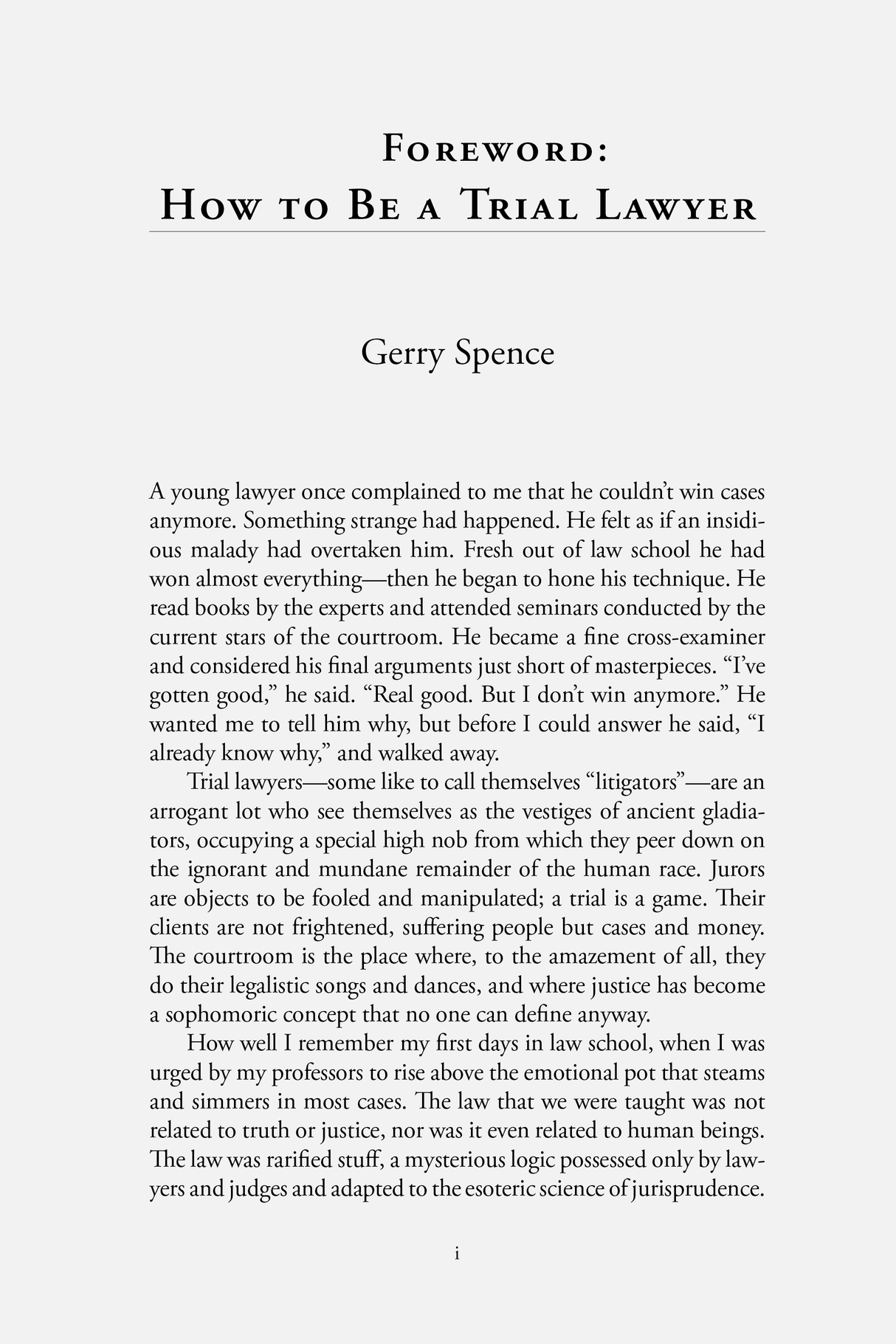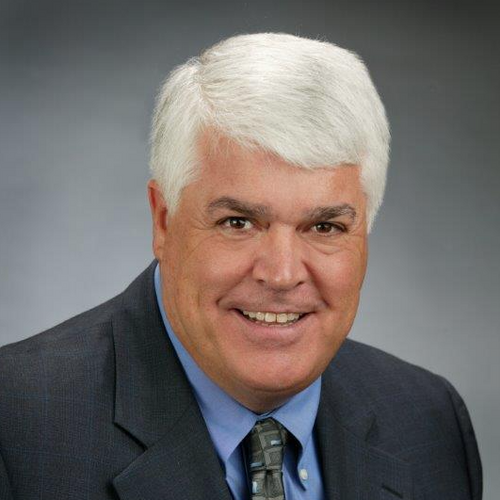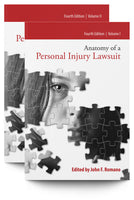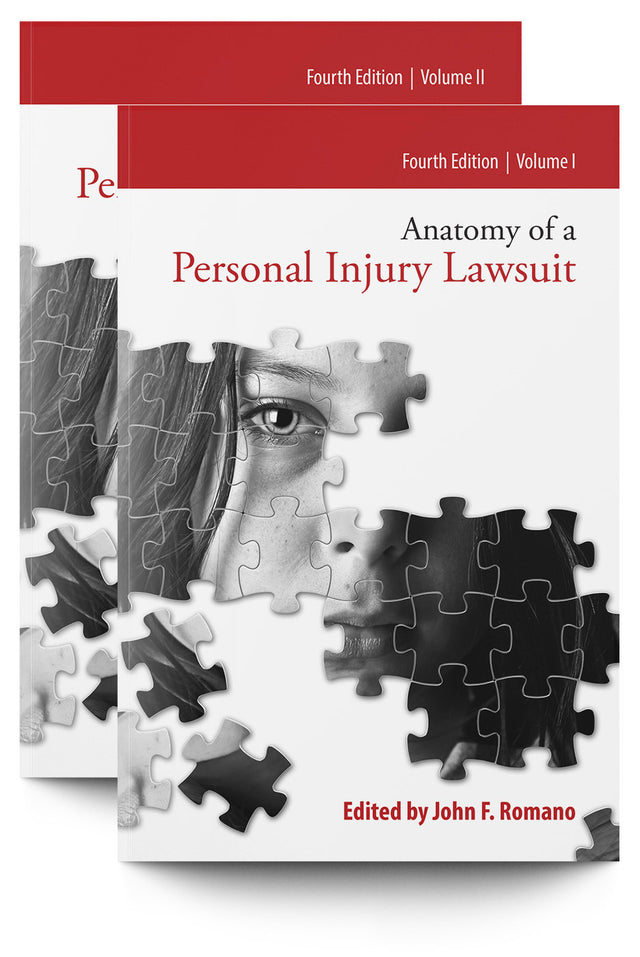Description
Description
The fourth edition of Anatomy of a Personal Injury Lawsuit, a two-volume set edited by John Romano, is a comprehensive and up-to-date resource for practicing plaintiffs’ attorneys and their staffs. Written by over sixty contributing experts on trial law and personal injury medicine, this new edition is stuffed with detailed advice, practice tips, arguments, charts, illustrations, and examples that you won’t find collected together anywhere else.
This new edition provides a step-by-step guide through the process of a personal injury claim, from the initial client interview to closing statements, including:
- Detailed discussions of how to negotiate for better outcomes during settlement and navigate through alternatives to litigation.
- Ways to present and make effective damages arguments for a variety of different kinds of cases (from punitive and wage-loss to noneconomic and medical related damages).
- The importance of understanding vital details such as how insurance companies are likely to view your clients’ claims.
- How to fight secrecy orders and deal with corporate defendants in discovery.
- In-depth explorations into common medical issues in personal injury cases, from basic anatomy and medical examination to epidemiology.
- An instructive overview on the benefits and methodology of using focus groups and mock trials to inform your strategies in settlement and trial.
- Essential elements of trial including everything from jury selection to closing statements.
Whether you’re settling your cases or following through to verdict, this is the must-have field manual to personal injury cases for every plaintiff’s attorney in America.
*This book is available for $225 for New Lawyers and Law Students who have been accepted into our New Lawyers Program. Please call our office at 800-309-6845 to receive this exclusive discount.
The following people contributed to this product:
- Morgan Adams
- Mary E. Alexander
- Lori E. Andrus
- Leslie A. Bailey
- James Bartimus
- William A. Barton
- Timothy J. Becker
- Lisa Blue
- Frank L. Branson
- Virginia M. Buchanan
- Michael S. Burg
- Peter W. Burg
- William F. Cash III
- James B. Chaplin
- Arthur C. Croft
- William M. Cunningham
- Tom D'Amore
- Aaron DeShaw
- Anthony L. DeWitt
- Stuart R. Fraenkel
- Joseph Fried
- Brenda S. Fulmer
- Matt Garretson
- Marc D. Grossman
- Robert L. Habush
- Dustin B. Herman
- Robert Hirschhorn
- Richard A. Jenson
- Julie Braman Kane
- Mark R. Kosieradzki
- Jeffrey J. Kroll
- Mark Lanier
- Jennifer Lapinski
- Judith Livingston
- Michael Maggiano
- Patrick Malone
- Randi McGinn
- Mary Alice McLarty
- Phillip H. Miller
- Billie-Marie Morrison
- Gretchen M. Nelson
- Peter Perlman
- Dorothy (Dottie) Perry Barker
- Troy A. Rafferty
- John M. Rastaino, Jr., DPM, JD, MPH
- Karen Roberts
- Daniel S. Robinson
- J. Eric Romano
- Todd A. Romano
- Clay Rossi
- Jacob Rusch
- P.J. Scheiner
- Peter M. Schosheim, MD, FACS
- Paul J. Scoptur
- Lance M. Sears
- Robert Shepherd, MS, CMI, FAMI
- Gerry Spence
- Kent Spence
- Joseph Vaccaro
- Tom Vesper
- David A. Wenner
Author
Author
Details
Details
Paperback: 976 pages; 2 books; 4th edition (2015); ISBN: 978-1941007266
Publisher: Trial Guides, LLC; AAJ
Table of Contents
Table of Contents
- Foreword
- Introduction
- The book starts with a history of its editions, when it was first published, who worked on previous iterations, and acknowledgements of the people who made this one happen.
- Initial Client Interview
- Roberts outlines best practices for your first interview with a new client. A good client relationship means defining your expectations, finding out who the offstage decision-makers are, establishing boundaries, and helping the client to understand their contract. This chapter also includes ways to avoid a bad client relationship and red flags to look for in a new client that may signal trouble down the road.
- The Segmentation of Injury Claims
- This chapter instructs on how insurance companies classify and handle various types of auto claims, and it provides a quick overview of how to think like an insurance company so that you can get the best value for your client on a personal injury claim whether you settle or go to trial.
- Mass Torts: The Bird's-Eye View
- A short overview to understanding mass torts and multi-district litigation (MDL) if your case is potentially part of a larger group being litigated together. This contains many references to case law and other materials to point readers in the right direction.
- Investigating the Case
- Investigating the case thoroughly means asking a lot of questions. What happened? When did it happen? Who saw it happen? The checklists and question lists in this chapter will help you think through all aspects of investigation, including the client’s story, your jury instructions, and the use of focus groups.
- The Analysis of Liability in Personal Injury and Wrongful Death Cases
- Analyzing liability is a complex problem involving your case’s facts and the law. Who or what caused your client’s injuries? Who or what failed to do something that could have prevented them? Any case’s viability depends on the nuances between facts and law, and this detailed chapter gives you an overview of liability analysis.
- Incident Reconstruction in Personal Injury, Motor Vehicle, and Trucking Cases
- This chapter is a basic overview of incident reconstruction. It includes a little bit of math and a lot of information about how to work with an incident reconstructionist on your trial team. What information can you expect, and how do you turn that information into a case that comes alive for the jury?
- Basic Medicine and Anatomy for the Personal Injury Lawyer
- Understanding basic anatomy is vital when you’re trying to understand your client’s injuries. Dr. Peter Schosheim and medical illustrator Robert Shepherd take you through common injuries in car crashes so that you can better understand your client’s medical records.
- Medical Examination and Testing in Auto Cases: Common Practice and Myths
- How was your client diagnosed with their injuries, and what methods of examination or testing did your client’s doctors use? What did the tests show? This detailed chapter gives you a tour through common methods of diagnosis and testing.
- Epidemiology
- Epidemiology is the science of studying disease or medical issues in large numbers of people. Mass tort and multidistrict litigation (MDL) cases often depend on the field epidemiology to show that a procedure, device, medical device, or treatment was unsafe. If you work on one of these cases, having a basic understanding of the science of epidemiology will help you read and use scientific literature more accurately.
- Damages: Wage Loss Related Damages
- What does your client’s loss of income mean to her daily life? What does her past and future loss of income mean? And how do you convey those losses to a jury? This chapter gives an in-depth analysis of these issues, including many references to relevant case law.
- Damages: Medical, Hospital, and Related Expenses
- If your client has damages related to medical or hospital expenses, use this chapter to learn how to thoroughly understand those damages and convey them to a jury. How do you plan for and accurately communicate these damages?
- Damages: Noneconomic Damages
- Noneconomic damages are one of the most difficult types of damages to convey in the courtroom or in a settlement conference. What are the aspects of your client’s life that have changed irrevocably, and how do you describe them? This detailed chapter takes you through all kinds of noneconomic losses, visible (like scarring or disfigurement) or invisible (pain and anxiety), and what they mean for your clients’ lives.
- Damages: Punitive Damages
- Punitive damages law changes across various states, and this detailed chapter gives you ideas of how to handle punitive damages differently in different states.
- Settlement
- There comes a time in every case when you have to decide to settle or go to trial. What should go into that decision, and how do you make it in a way that will do the most good for your client? How do you work with insurance adjustors, other attorneys, and your client to make sure you get what your client needs? This chapter guides you through the decisions that you need to make about settlement.
- Structured Settlements
- How can you help your client if they win a verdict in court with a large settlement? For some clients and some situations, setting up a structured settlement means that your client has a lifetime of steady, predictable income. A structured settlement, however, is a complicated financial instrument with a lot of decisions that have long-term ramifications for your client’s care.
- Lien Resolution and Medicare Set-Asides
- If your client wins a verdict or settlement, how does this affect their future or current ability to collect Medicare or Medicaid? This chapter guides you through the applicable laws and math to begin answering these questions.
- General Discovery: Thirteen Rules for Effective Discovery
- The authors of Advanced Depositions Strategy and Practice bring you a chapter on deposition techniques you can use in a variety of cases to help you learn more about what happened, when it happened, and who knows which facts in your case.
- Accelerated Discovery: Cutting Through Obstructions
- When one or more of the defendants in your case is a corporation, you’ll have to depose a 30(b)(6) witness—a designated corporate representative. This chapter teaches you about working with this kind of witness and the applicable law surrounding these depositions.
- E-Discovery and the Trial Lawyer
- Electronic data is a crucial part of most cases today, but in a technological climate that is always shifting, using it can be overwhelming. This chapter offers a timely and approachable overview of electronically stored information and what you must know to find, preserve, analyze, and use it in your case.
- Index
Table of Contents Volume II (490 pages)
- Fighting Secrecy: Strategies from Discovery Through Settlement
- Blanket protective orders in complex cases are routine, and too often, a defendant's demands for secrecy are detrimental to your client’s case. This chapter will help you to navigate the lengthy and less-than-glamorous world of negotiating court secrecy at every stage of the trial.
- Alternatives to Litigation: Mediation
- Even though all of your clients ultimately want the same thing—a speedy and satisfying conclusion to their case—a seasoned trial lawyer knows that each case requires a different type of finesse to reach that conclusion effectively. One alternative to standard litigation is mediation, and here, you can learn about the history of mediation, when to utilize it, and how you can use it to your clients’ greatest advantage.
- Alternatives to Litigation: Arbitration
- When your client needs a more flexible, casual, and inexpensive alternative to standard dispute resolution, the arbitration process can provide that. But what does that mean for you? How do you pursue arbitration, and more importantly, how do you pursue arbitration in a way that will yield satisfying results for your client?
- Case Themes, Case Theories, and Case Images
- Many trial attorneys will throw around the terms case theme and case theory, but this chapter lays down a solid definition around which you can begin to form a case. It demonstrates the value of developing strong themes, theories, and images to shape your case from the start even as it explores the importance of adaptability when combating the defendant's themes and theories in turn.
- Mock Trials and Focus Groups
- No matter how knowledgeable or experienced a lawyer may be, every trial is different, and every new jury presents a host of unpredictable new quirks and challenges. Jury research, however, can help to mitigate that unpredictability, and this chapter explores the most effective ways to do so, from the best way to conduct jury research to the best way to analyze your data.
- Computers and Personal Injury Litigation
- Using the right tools to research and deliver your case might be the difference between success and failure for your client, and increasingly, the right tools are electronic. New computer programs and technologies could make your life as a trial lawyer easier than ever before. But which tools should you use, how do your transition to those tools, and how do you use those tools to your greatest advantage once you have them? This chapter presents an accessible overview of timely technologies for lawyers of any technological proficiency.
- Jury Instructions and Questions
- When it comes to competently developing and framing a case, sometimes the best thing a trial lawyer can do is begin at the end. Jury instructions are crucial to a jury’s understanding of a case, and this chapter explains all the ways that careful consideration of jury instructions at a case’s outset can shift the outcome in your client’s favor.
- Credibility in the Courtroom
- All lawyers understand the importance of appearing credible to the jury, but how does an attorney reach any sort of understanding with them in the environment and circumstances surrounding a trial? Here, you will learn that fostering the mutual respect with the jury that is necessary to successfully navigate an emotionally charged trial begins and ends with your own sense of self.
- Voir Dire Examination and Jury Selection: Liability
- Many lawyers today lack confidence in their ability to skillfully carry out voir dire despite the fact that it is a critical part of any trial attorney’s case. This chapter will help prepare lawyers to select the best possible jury for their case and their client.
- Voir Dire Examination and Jury Selection: Damages
- Expounding on many of the themes laid out in the previous chapter, this section details the most effective way to approach the delicate topic of damages with a jury that may, in today’s political climate, be poised to turn against the plaintiff.
- Opening Statement
- The opening statement is critical to a jury’s ruling given that it will ultimately shape the way they interpret the entire case. In this chapter, learn how to introduce the story and elements of your case in a way that is persuasive, faithful to your evidence, and approachable for your audience.
- Planning, Designing, and Handling the Plaintiff's Case-In-Chief
- Once you’ve got your jury and you’ve presented your opening statement, how do you ensure that all the hard work you’ve put into developing your case comes through in your presentation? This chapter provides a comprehensive overview of the best practices when it comes to preparing for and conducting yourself during a case-in-chief.
- Direct Examination
- Though it’s important that your direct examinations appear effortless and that they all blend seamlessly into one another to form your complete story, attaining that appearance is anything but easy. This chapter will help you to plan and execute your testimonies to most effectively and most efficiently utilize the credible voices of your witnesses.
- Using Expert Witnesses
- Expert witnesses can be crucial to the credibility of your case, but what is the best way to utilize their testimony in court? In this chapter, learn how and when to use experts, how to find experts, and how to handle opposing expert testimony.
- Demonstrative Evidence
- Visual aids are essential to maintaining the attention of a modern audience; so demonstrative evidence in a trial can be indispensable when it comes to getting your story through to the jury. This chapter explores the different types of demonstrative aids and how you can achieve the greatest impact with each variety.
- Cross-Ups in Cross-Examination: the Art, the Science, the Methodology
- Voir dire is only the first step toward a fruitful connection and positive rapport with the jury. In this chapter, you will learn that a measured correspondence with the jury coupled with proper planning and preparation to this end during cross-examination can provide a powerful tool for an attorney of any skill or experience level.
- Summation in Personal Injury and Wrongful Death
- Wrapping up a well-argued case can be the most satisfying part of a trial lawyer’s job if the summation is properly executed. But how do you speak and present yourself? What kind of language is most effective? How do you confront a delicate topic like damages? And, most importantly, how do you conclude in a way that is succinctly satisfying, memorable, and persuasive for the jury?
- The Magic of Advocacy
- It’s no secret that good storytelling is at the core of every successful case argument. This chapter outlines not only the process of creating that story from beginning to end—with special consideration for the audience, the casting, and the staging of a story—but also what it takes to rehearse, sequence, and deliver that story as powerfully as possible.
- Conclusion: The Trial Lawyer's Creed
- This chapter wraps up the book by taking a look at a creed that all trial lawyers should strive to uphold. The creed advocates a strong moral compass and a vigilance and preparedness in all aspects of life.
- Index

